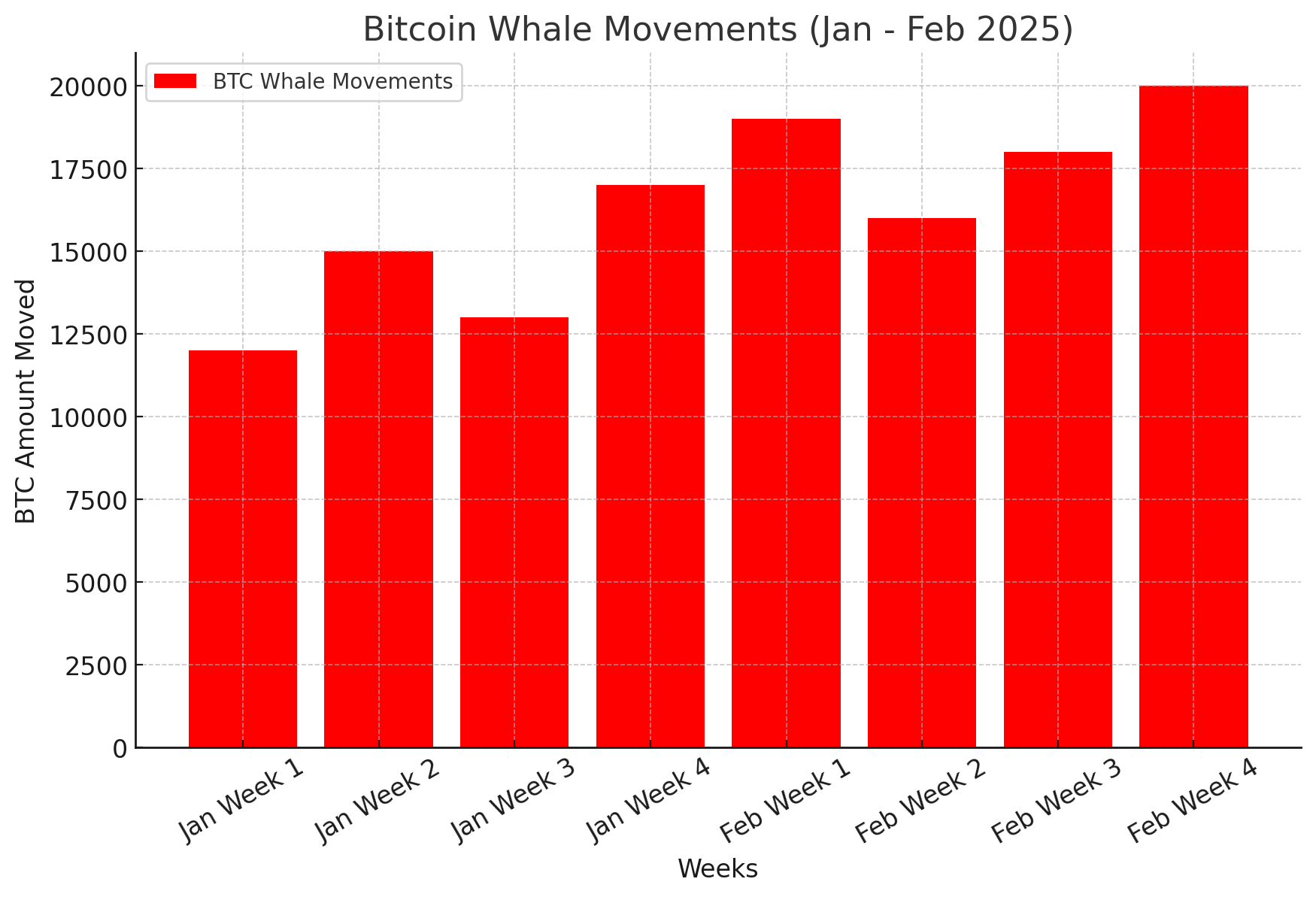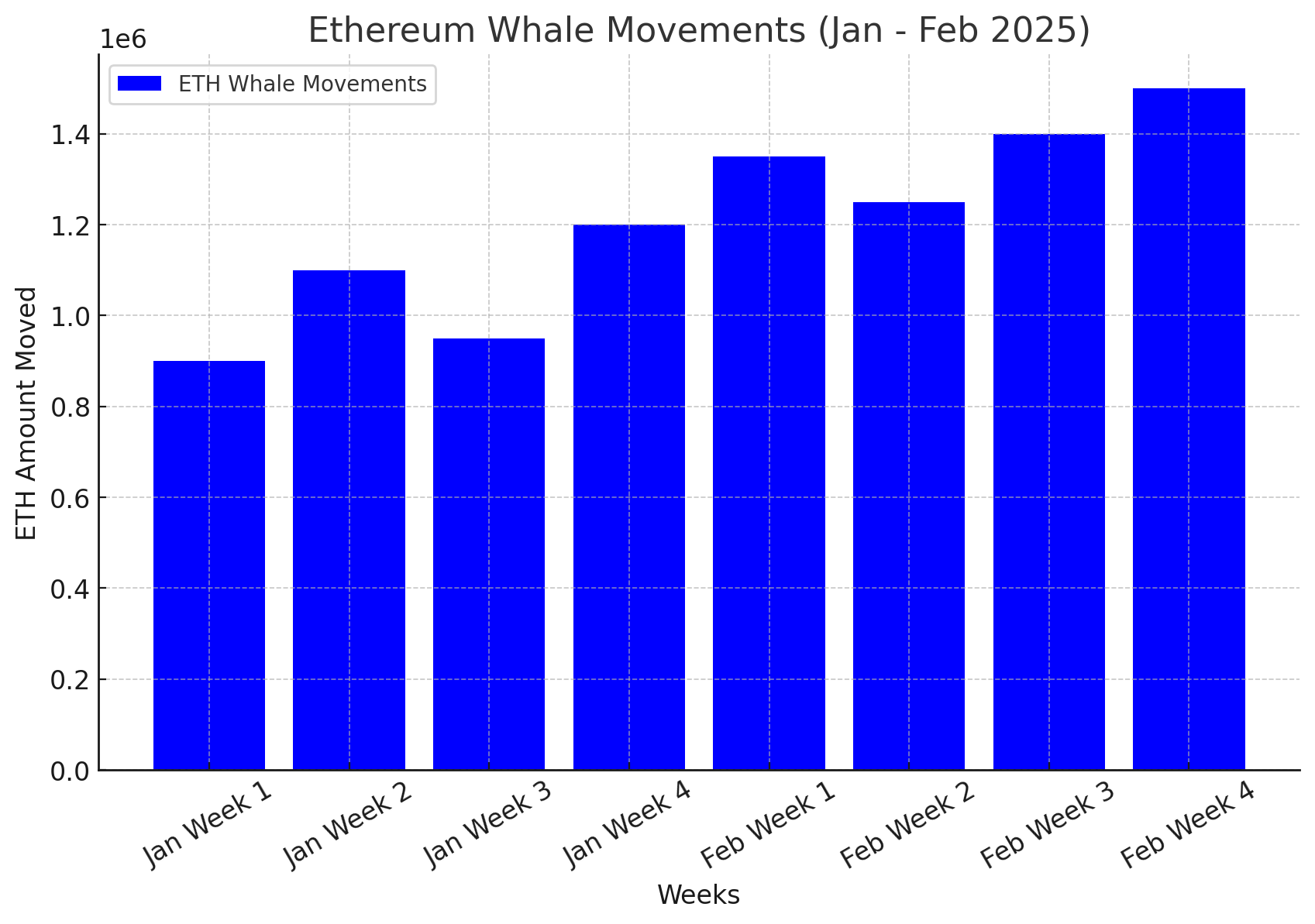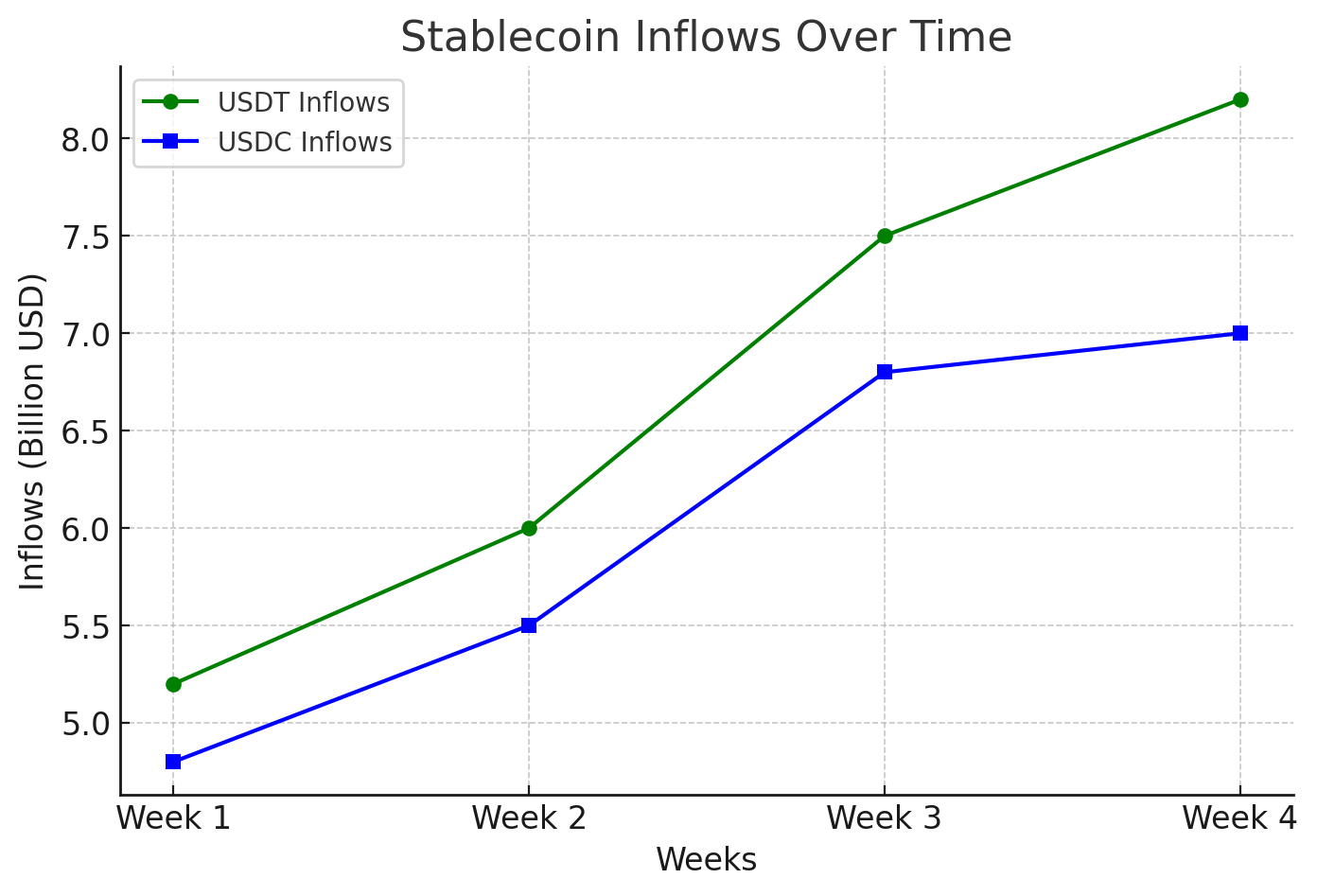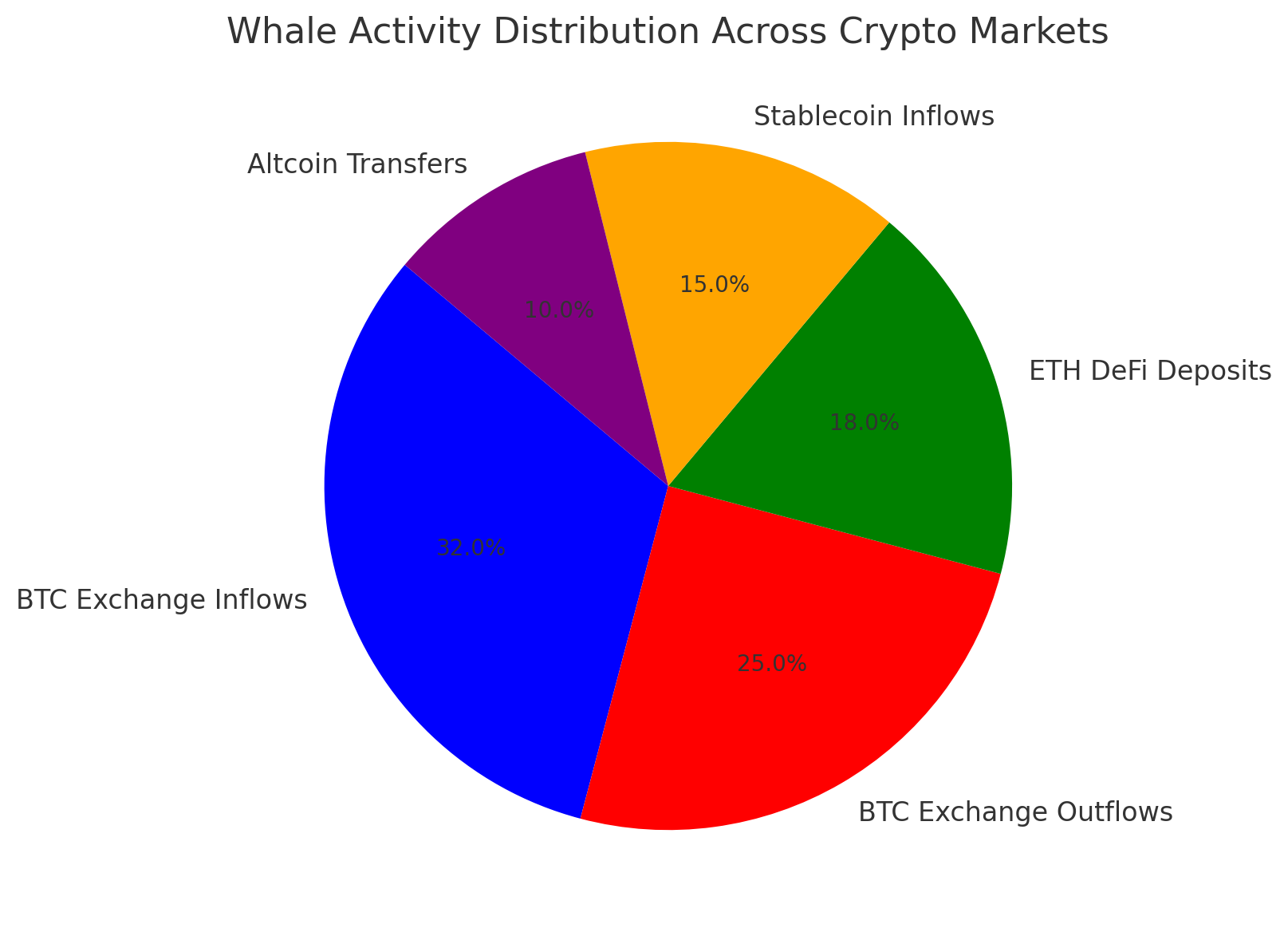In the cryptocurrency market, the activities of large holders, known as whales, play a crucial role in shaping price trends. These entities, holding vast amounts of Bitcoin, Ethereum, and other digital assets, can trigger significant market shifts through their transactions. Whether they are accumulating, distributing, or moving funds between exchanges and private wallets, their actions often dictate short-term volatility and long-term trends.
- Top Whale Activities This Week—Accumulation or Distribution?
- Bitcoin Whales: Accumulating or Cashing Out?
- Ethereum Whales: Quiet Accumulation or DeFi Shift?
- Altcoin & Stablecoin Movements—What’s Happening?
- How to Track Whale Movements & Stay Ahead
- Conclusion: What Do Whales Know That Retail Traders Don’t?
- Glossary

Tracking their movements has become an essential strategy for traders and investors looking to anticipate potential market shifts. On-chain data suggests that whale activity has intensified recently, leading to speculation about whether they are preparing for an upcoming Bitcoin rally or setting up for a broader market correction.
Top Whale Activities This Week—Accumulation or Distribution?
Following the recent market turbulence, are whales positioning themselves for a market rally by accumulating, or are they cashing out by distributing their assets?
Bitcoin Whales: Accumulating or Cashing Out?
Recent whale movements indicate significant Bitcoin transfers across multiple wallets and exchanges.
- Large Bitcoin transfers to exchanges: Over 15,000 BTC (~$1.32 billion) were moved to Binance, Coinbase, and Kraken, raising concerns about potential sell-offs.
- Accumulation patterns detected: Some long-term holders withdrew 8,500 BTC (~$748 million) from exchanges, signaling a commitment to holding rather than selling.
- Institutional participation growing: Strategy, the largest corporate Bitcoin holder, recently secured $2 billion in funding for potential Bitcoin purchases.

A blockchain analysis from Glassnode indicates that when whales transfer Bitcoin into exchanges, it typically leads to increased selling pressure. On the other hand, withdrawals to cold storage often suggest accumulation and long-term holding strategies.
“Historically, large Bitcoin withdrawals from exchanges signal strong holding sentiment. If whales are pulling BTC into private wallets, it usually indicates a bullish outlook,” noted Glassnode analyst Jessica Wu.
Ethereum Whales: Quiet Accumulation or DeFi Shift?
Ethereum whale activity has been particularly interesting, with a trend favoring staking and DeFi investments rather than outright market exits.
- Over 600,000 ETH (~$1.43 billion) withdrawn from exchanges, reducing immediate selling pressure.
- Significant deposits into DeFi protocols such as Lido and EigenLayer, signaling a preference for yield-generating opportunities.
- CME Ethereum futures activity is increasing, suggesting heightened institutional interest in Ethereum as a tradeable asset.

According to Nansen’s latest market report, Ethereum whales are increasingly using staking and liquidity pools as alternative ways to generate passive income instead of selling on exchanges. This trend indicates a longer-term bullish outlook for ETH.
“Ethereum’s staking model has become highly attractive to whales, with many shifting assets toward yield-bearing strategies rather than outright selling,” explained Nansen researcher Aaron Ling.
Altcoin & Stablecoin Movements—What’s Happening?
Whale activity isn’t limited to Bitcoin and Ethereum. Several altcoins and stablecoins have seen substantial transactions, hinting at evolving market trends.
- Stablecoin inflows rising: USDT and USDC deposits to exchanges have surged, suggesting that whales are preparing to buy assets at lower prices.
- Solana (SOL) and Cardano (ADA) whales increasing holdings: Large transactions in these ecosystems point to potential pre-positioning for major network updates.
- Speculative plays in meme coins: A rise in SHIB and DOGE whale purchases may signal short-term trading strategies rather than long-term accumulation.

Santiment’s latest research highlights that altcoin whale activity often spikes before major announcements, giving traders an early indication of upcoming price movements.
“Altcoin whales tend to be more speculative, and their activity is often tied to upcoming announcements or network developments,” noted Santiment’s lead analyst David Chang.
How to Track Whale Movements & Stay Ahead
Understanding whale activity is crucial for traders looking to anticipate market trends. By analyzing large transactions and exchange inflows, investors can gauge potential price movements.
“Whale movements often precede major market swings,” said blockchain analyst Philip Tan of CryptoQuant.
On-chain tracking tools such as Whale Alert, Lookonchain, and Nansen provide real-time insights into whale transactions. Platforms like Glassnode and CryptoQuant offer exchange inflow/outflow metrics that help traders assess whether whales are buying or preparing to sell.

Analysts emphasize that keeping track of whale wallet movements, exchange deposits, and stablecoin inflows can offer valuable signals on where the market might be heading.
Conclusion: What Do Whales Know That Retail Traders Don’t?
Crypto whales continue to dominate market activity, shifting vast sums of Bitcoin, Ethereum, and altcoins across wallets and exchanges. Their movements can provide early warnings about upcoming price trends, making them a critical factor for traders to monitor.
The recent surge in whale withdrawals suggests a mix of long-term accumulation and strategic repositioning, especially in Ethereum’s staking sector and stablecoin inflows to exchanges. Whether these moves signal an upcoming Bitcoin rally past $100K or preparation for a market cooldown remains to be seen.
Understanding and tracking whale activity is becoming an essential strategy for traders and investors aiming to stay ahead of market trends. As data continues to unfold, it will be crucial to observe how these major players navigate the evolving crypto landscape.
Stay updated with Deythere as we’re available around the clock, providing you with updated information about the state of the crypto world.
FAQs
1. Why do crypto whales move large amounts of Bitcoin and Ethereum?
Whales move large amounts of crypto for accumulation, selling, staking, or liquidity management. Deposits to exchanges often indicate selling, while withdrawals suggest long-term holding.
2. How do whale transactions impact Bitcoin’s price?
Large whale deposits can increase selling pressure, pushing prices down, while withdrawals reduce supply, signaling bullish sentiment. These movements often lead to noticeable price swings.
3. What altcoins are currently being accumulated by whales?
Recent data shows whales accumulating Solana (SOL), Cardano (ADA), and Ethereum-based tokens. Meme coins like SHIB and DOGE have also seen increased whale interest, likely for speculative trading.
4. How can traders track whale activity to stay ahead in the market?
Traders can use on-chain tracking tools like Whale Alert, Lookonchain, and Nansen to monitor large transactions. Exchange inflow/outflow data from platforms like Glassnode and CryptoQuant helps identify whale buying or selling trends.
Glossary
Whale: A crypto whale refers to an individual or entity holding a large amount of cryptocurrency. Their transactions can significantly impact market prices due to the size of their holdings.
Exchange Inflows & Outflows: Exchange inflows occur when crypto is deposited into exchanges, often signaling potential selling. Exchange outflows happen when crypto is withdrawn to private wallets, typically indicating accumulation or long-term holding.
Stablecoin Inflows: Stablecoin inflows refer to large transfers of USDT, USDC, or other stablecoins to exchanges. This suggests that traders, including whales, are preparing to buy crypto assets.
DeFi Staking: DeFi staking involves locking up crypto assets in decentralized finance protocols to earn rewards. Ethereum whales often stake ETH rather than selling it, reducing circulating supply and influencing price stability.
On-Chain Analytics: On-chain analytics refers to the tracking of blockchain data to monitor wallet movements, transaction flows, and exchange activity. Tools like Whale Alert and Glassnode help traders analyze whale behavior.
References
Disclaimer
This article is for informational purposes only and should not be considered financial advice. Cryptocurrency investments are highly volatile, and readers should conduct their own due diligence before making investment decisions.



















































































































